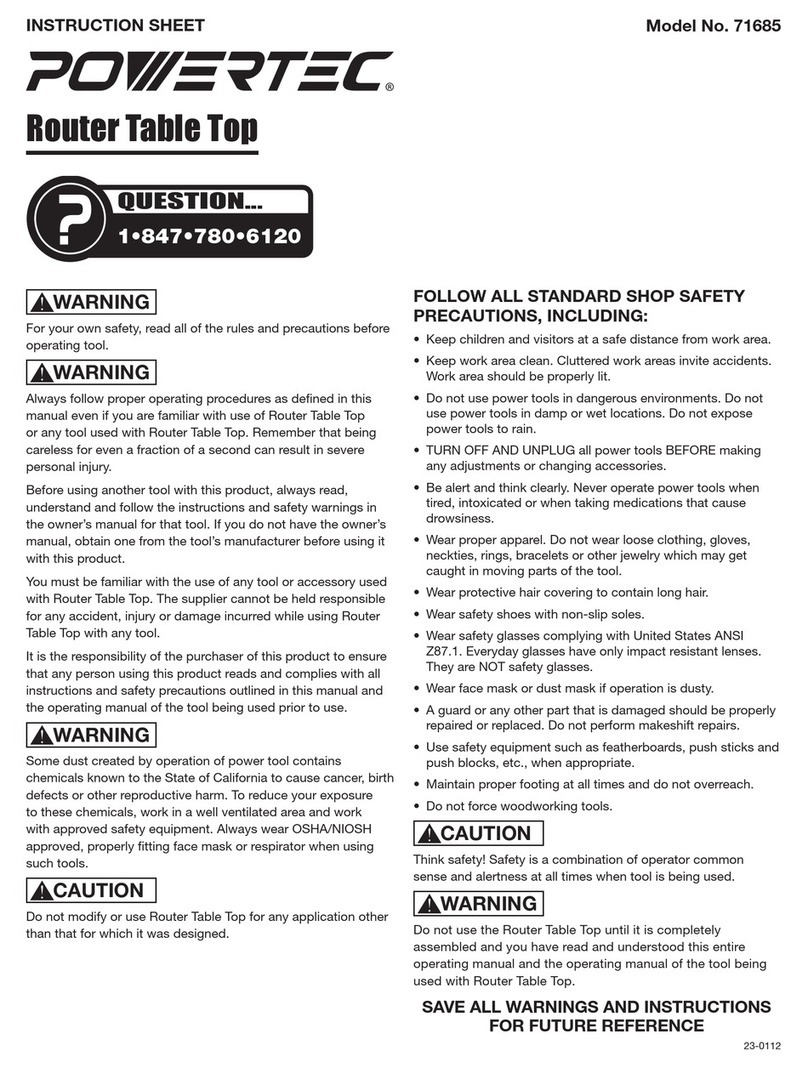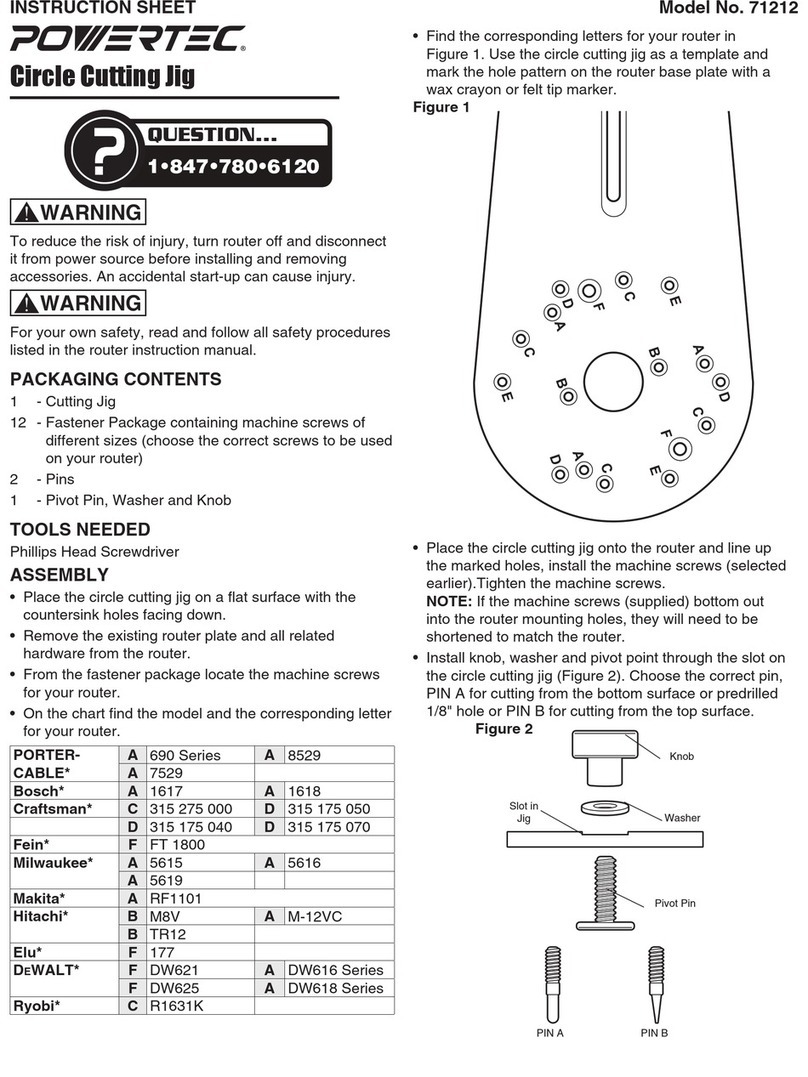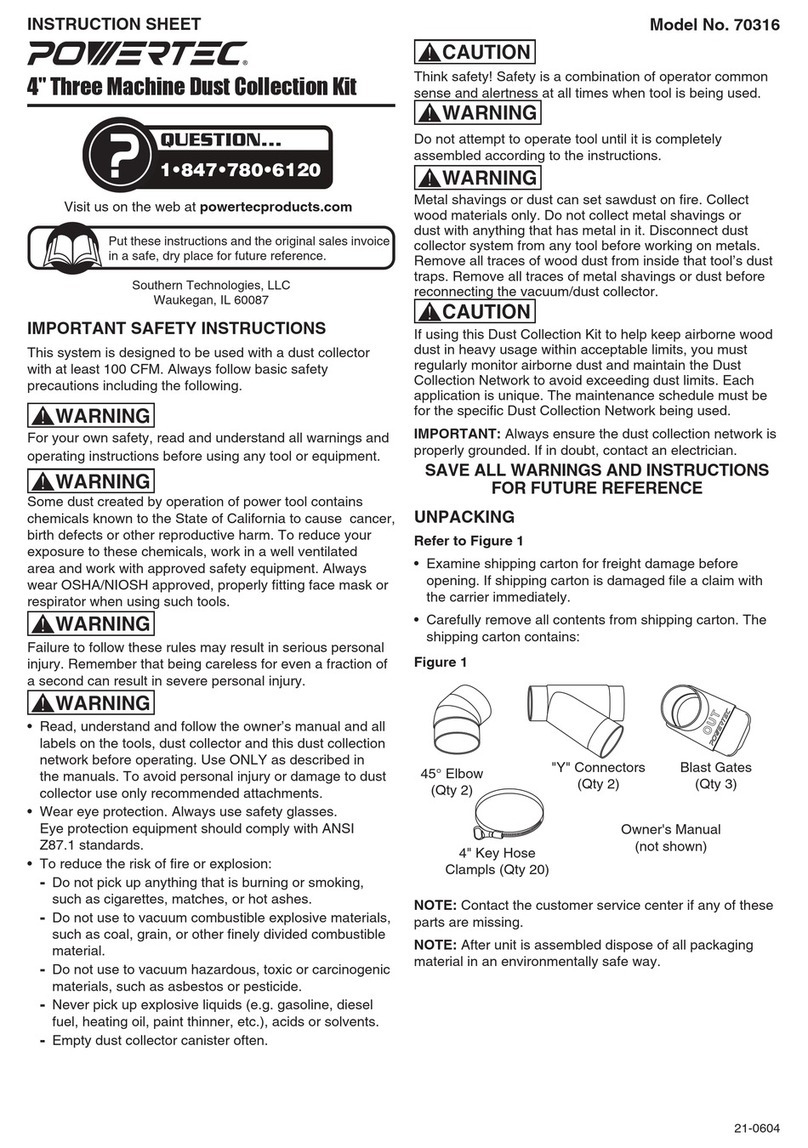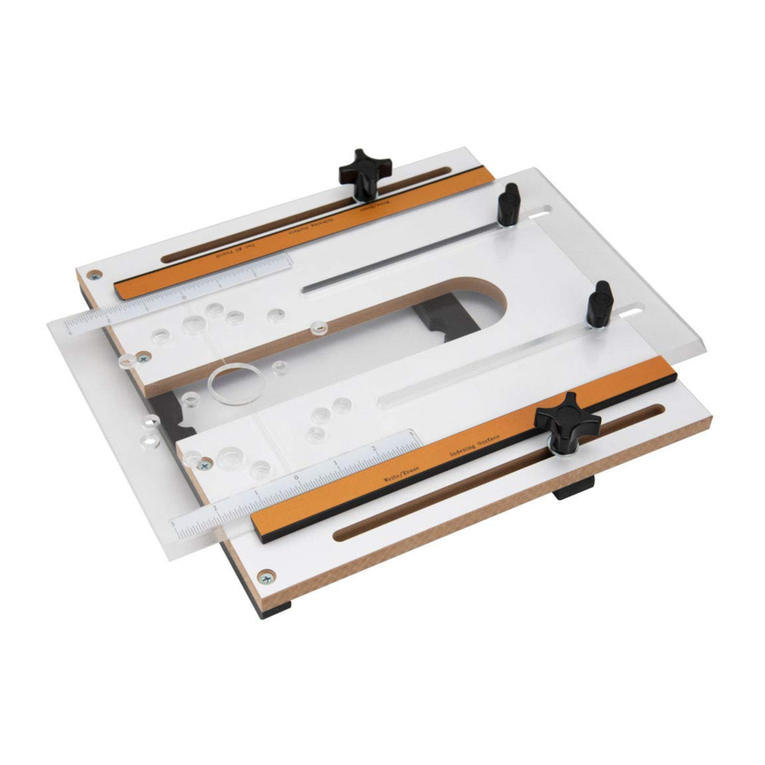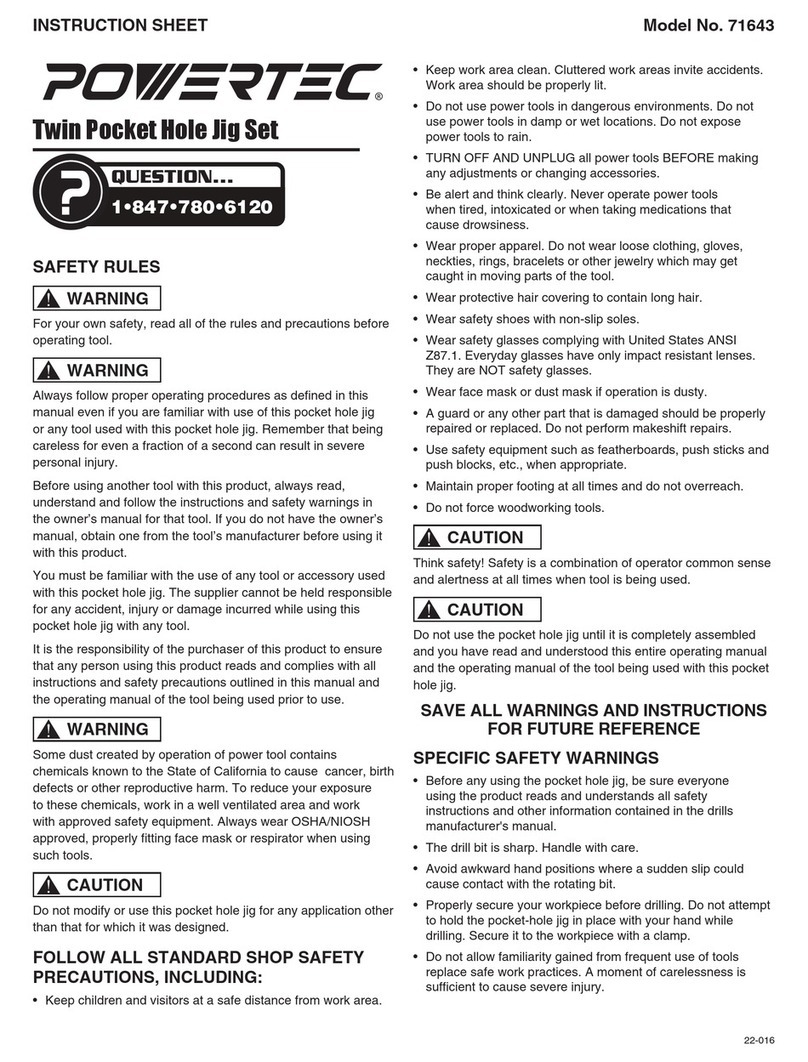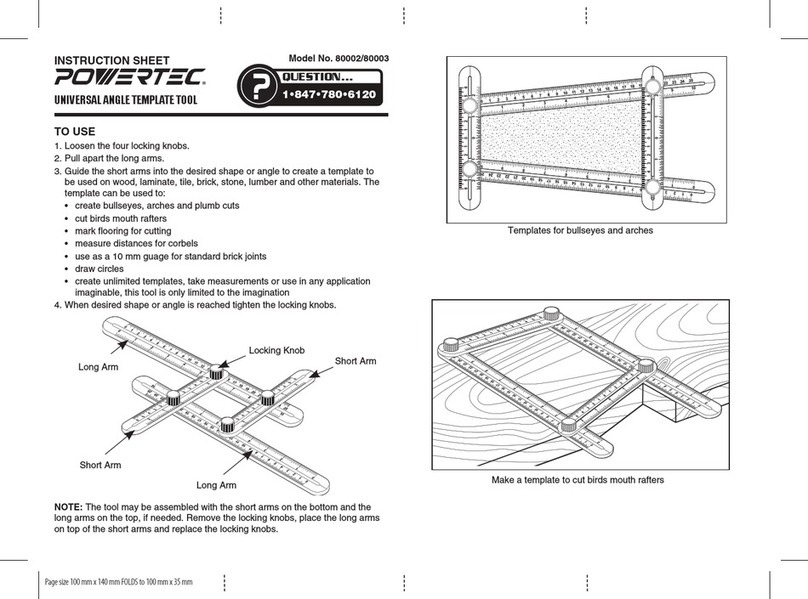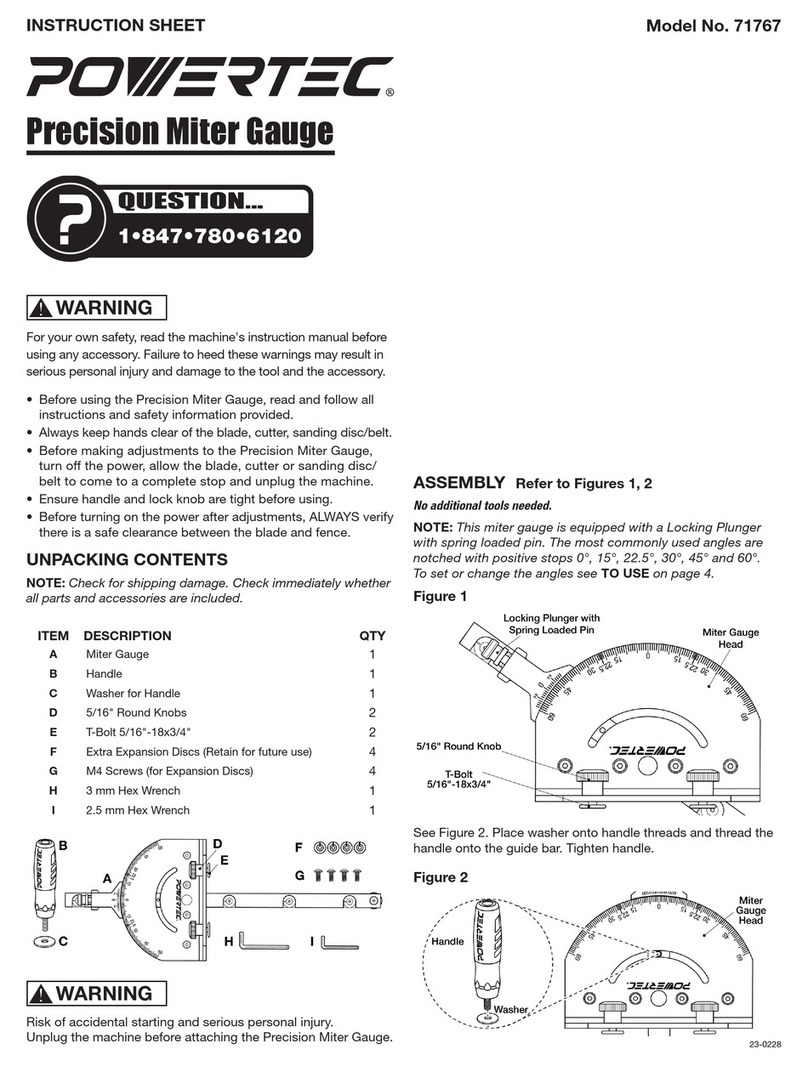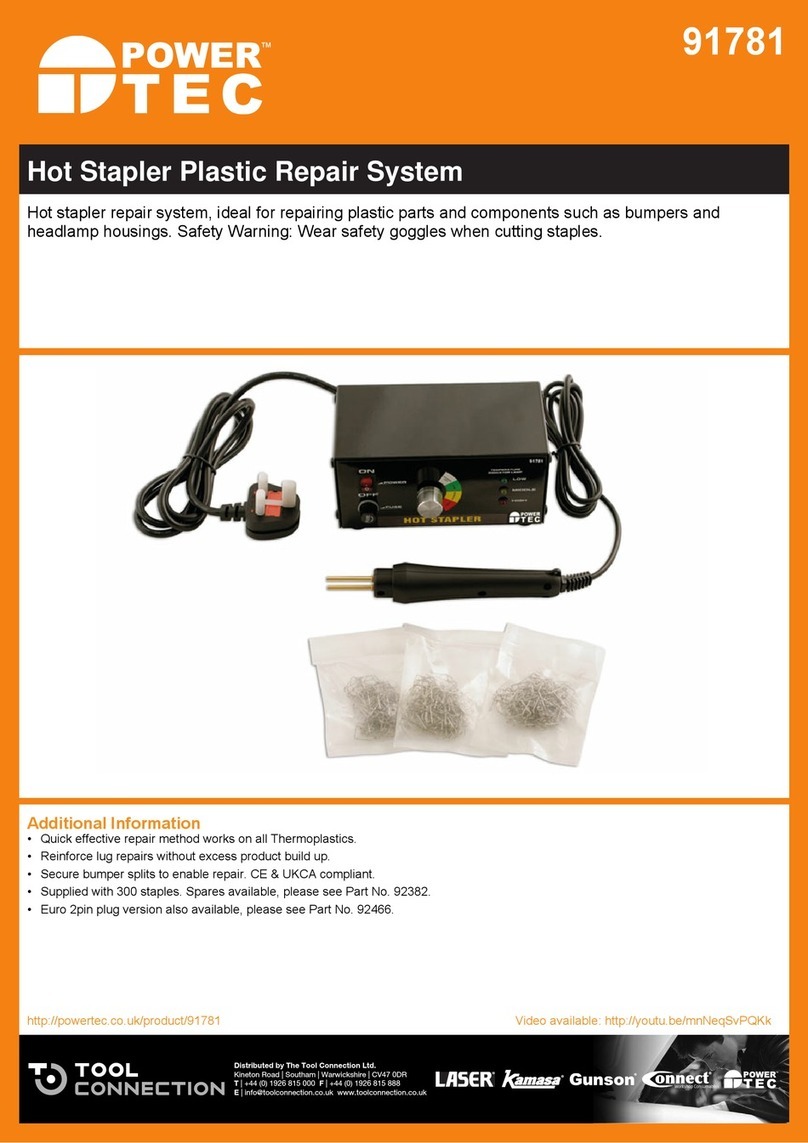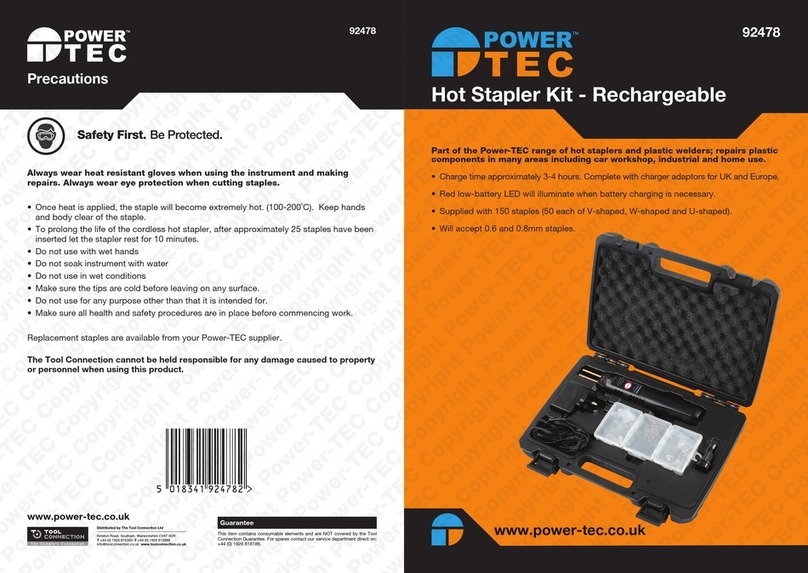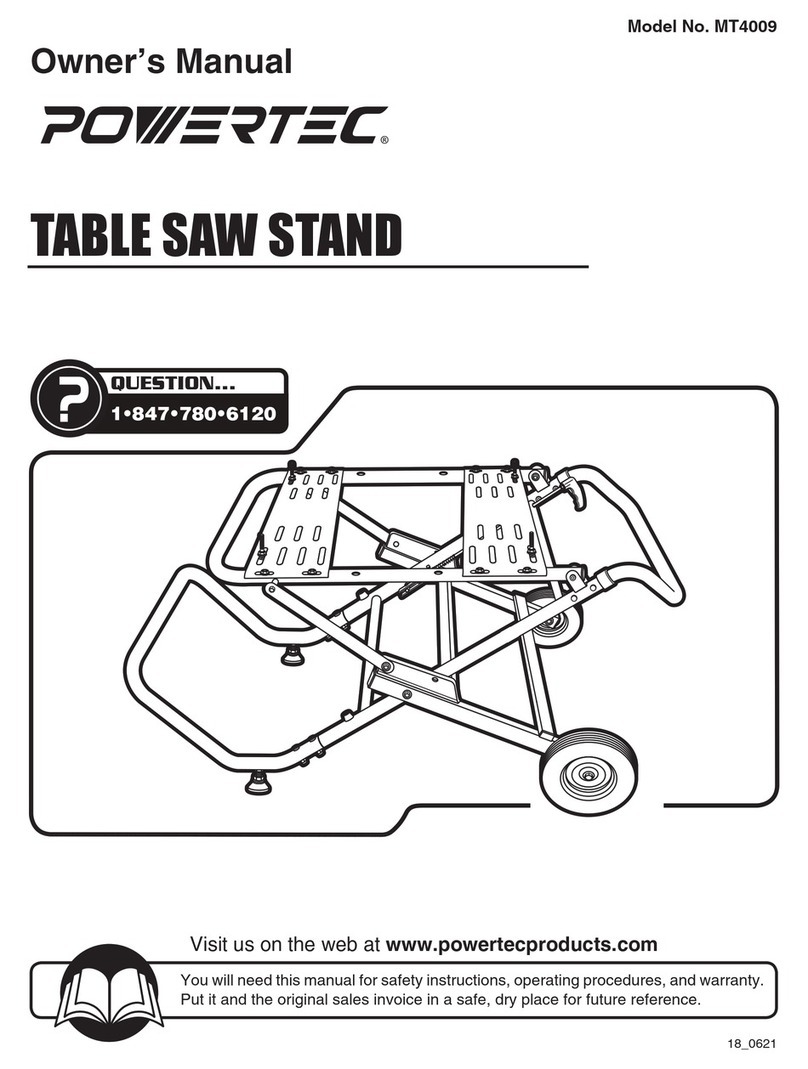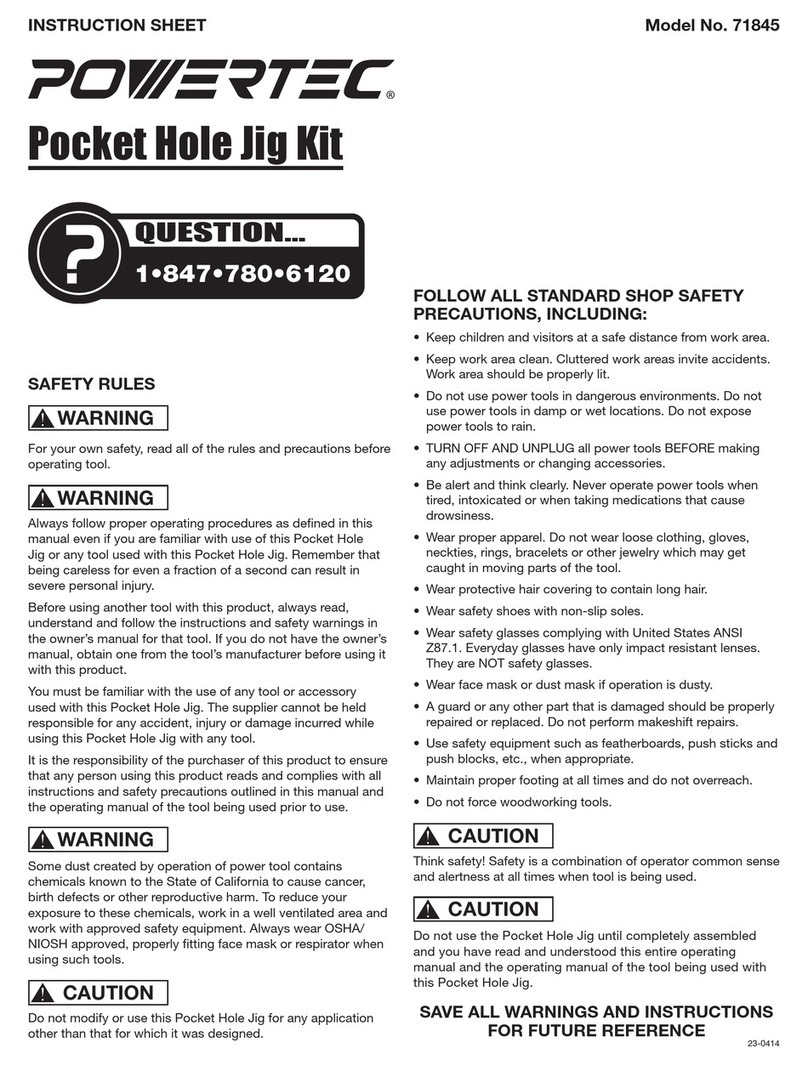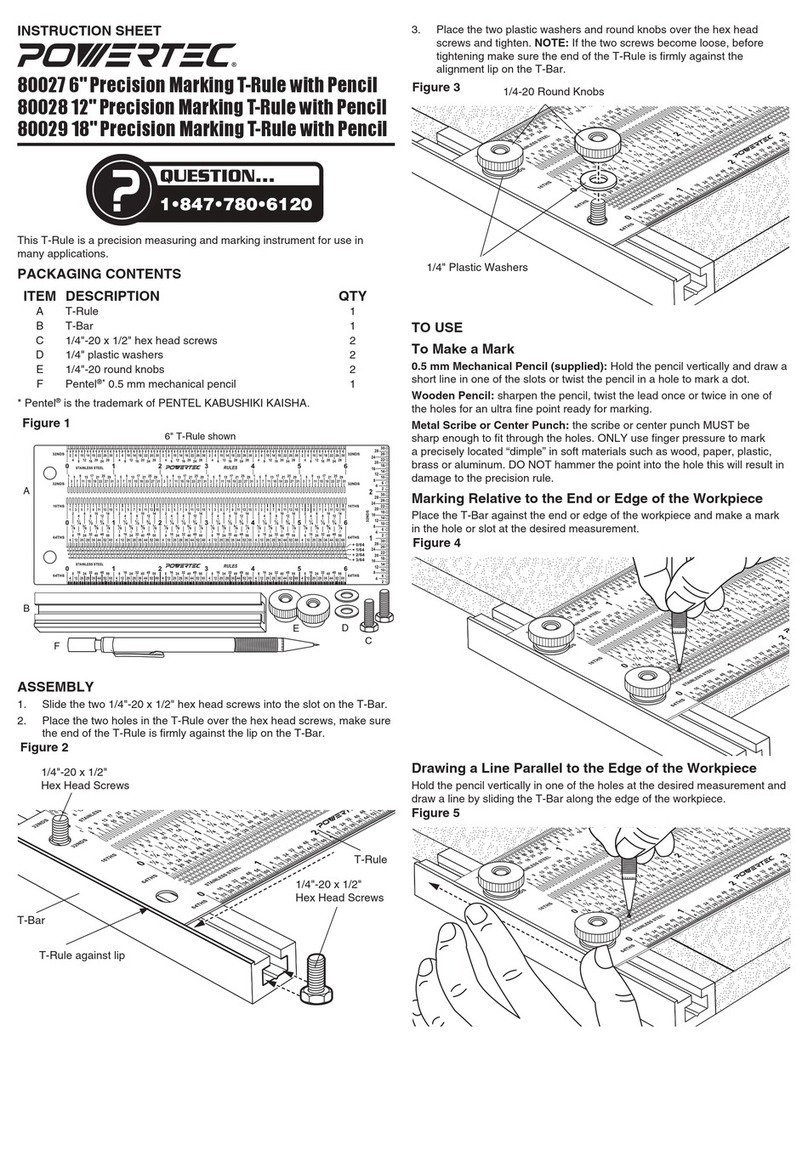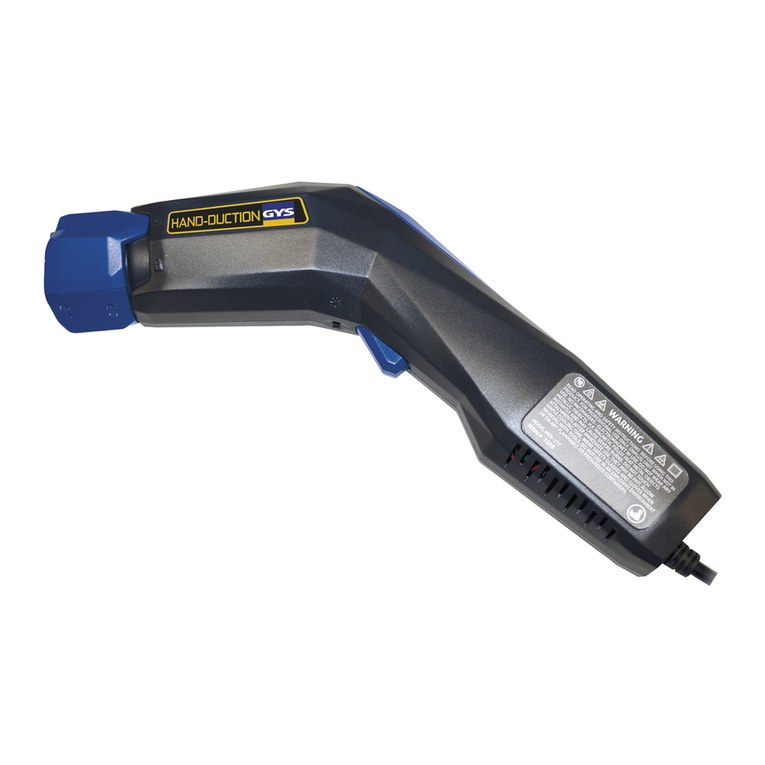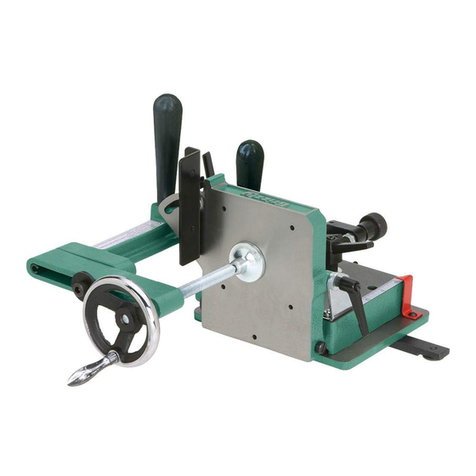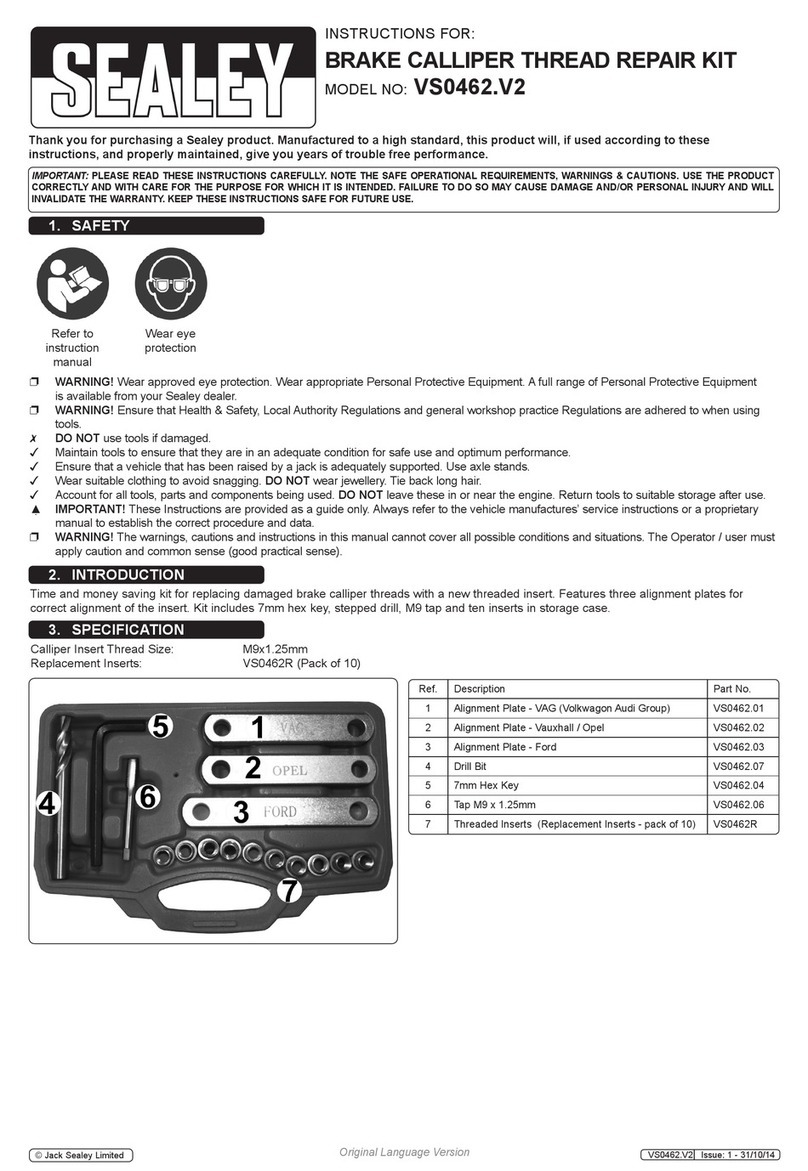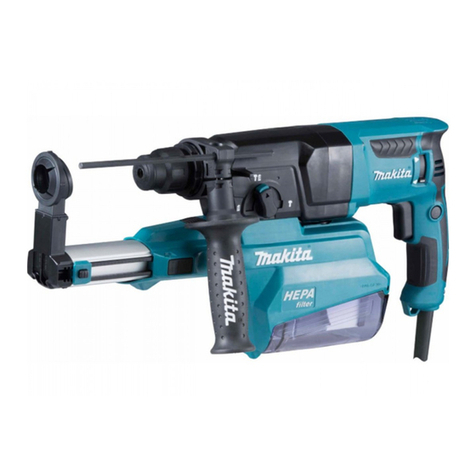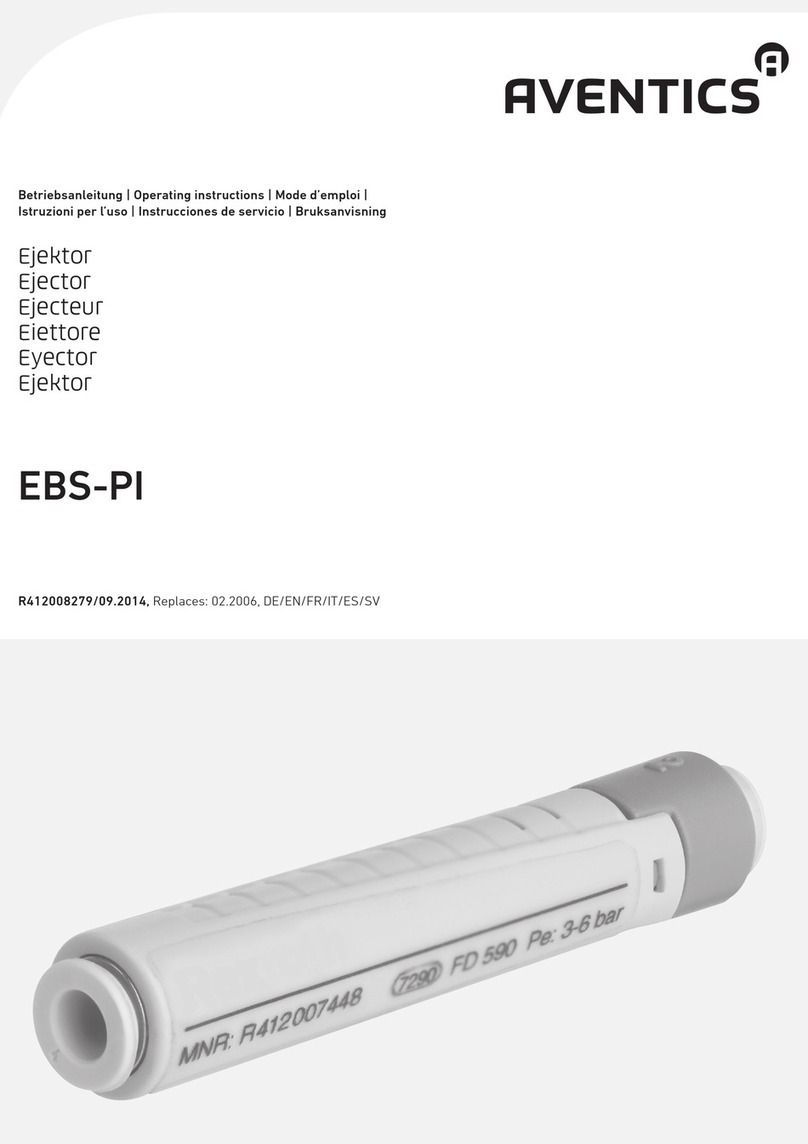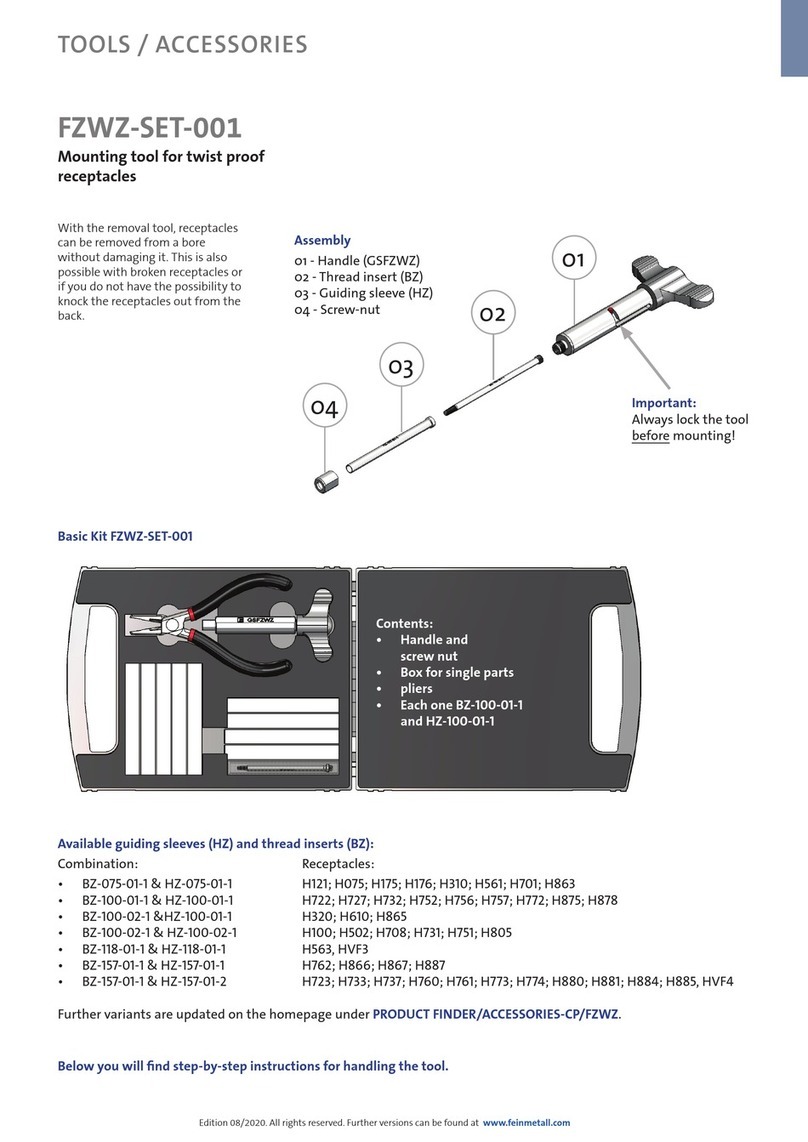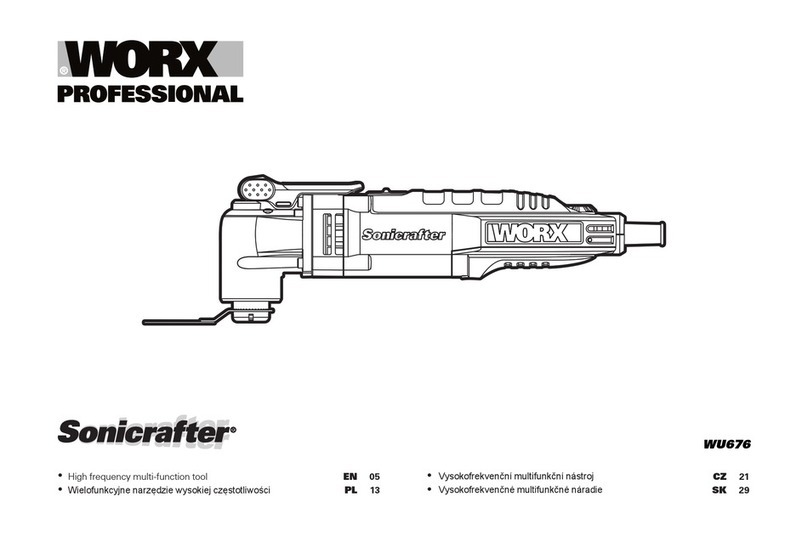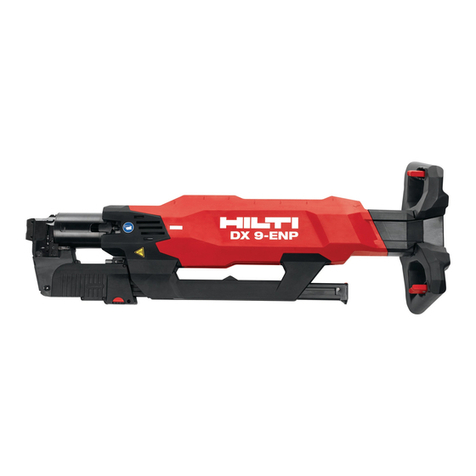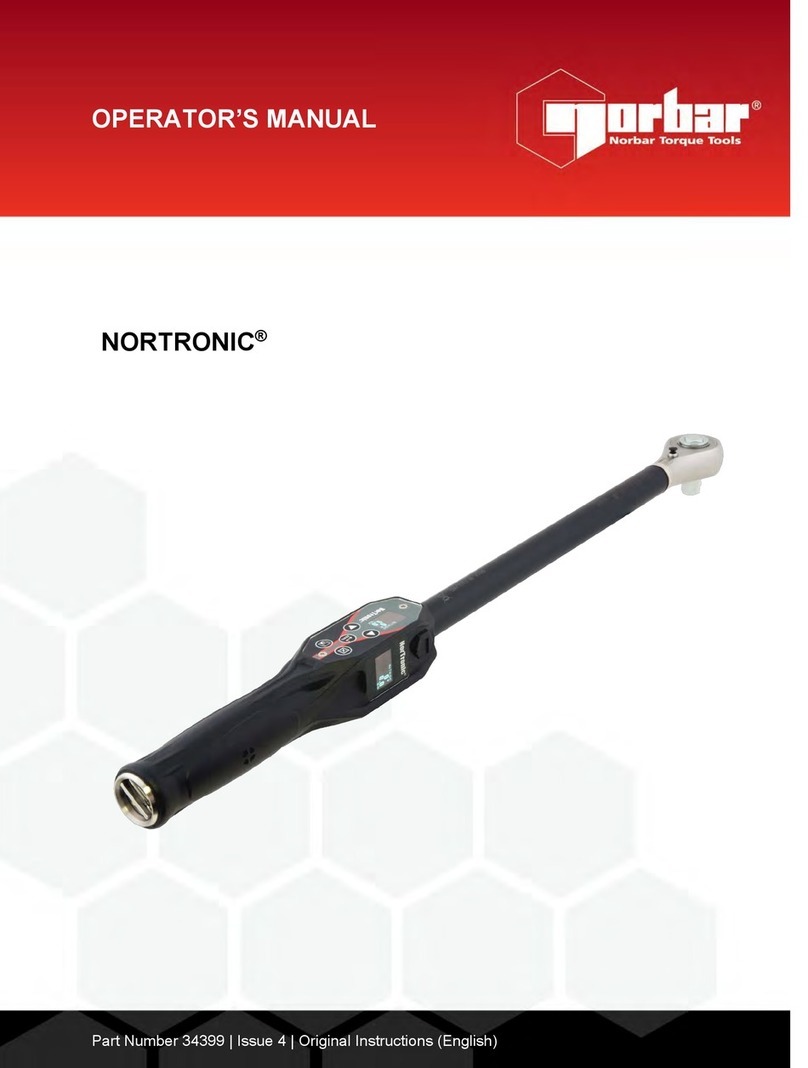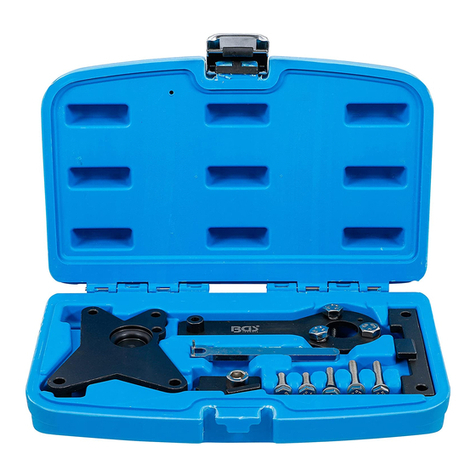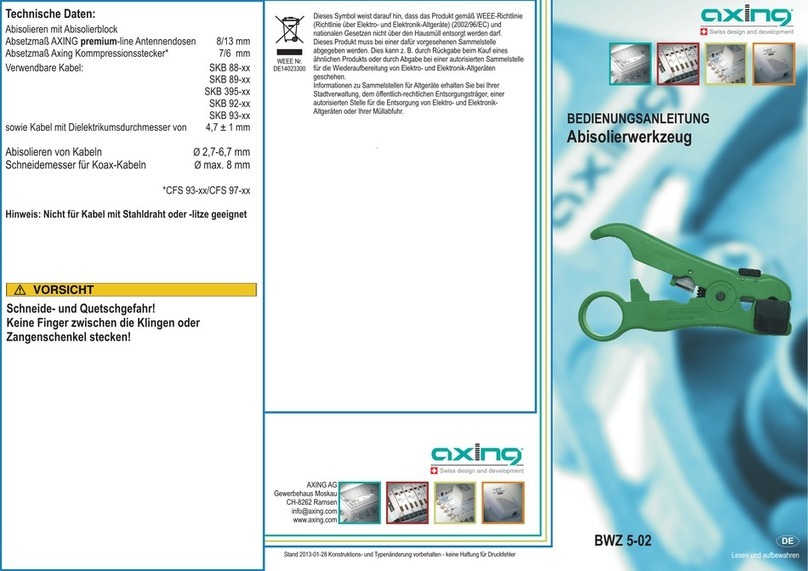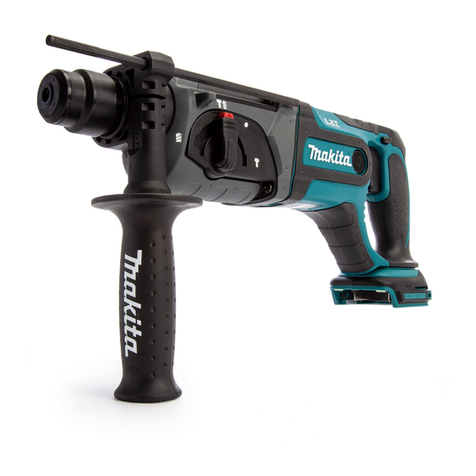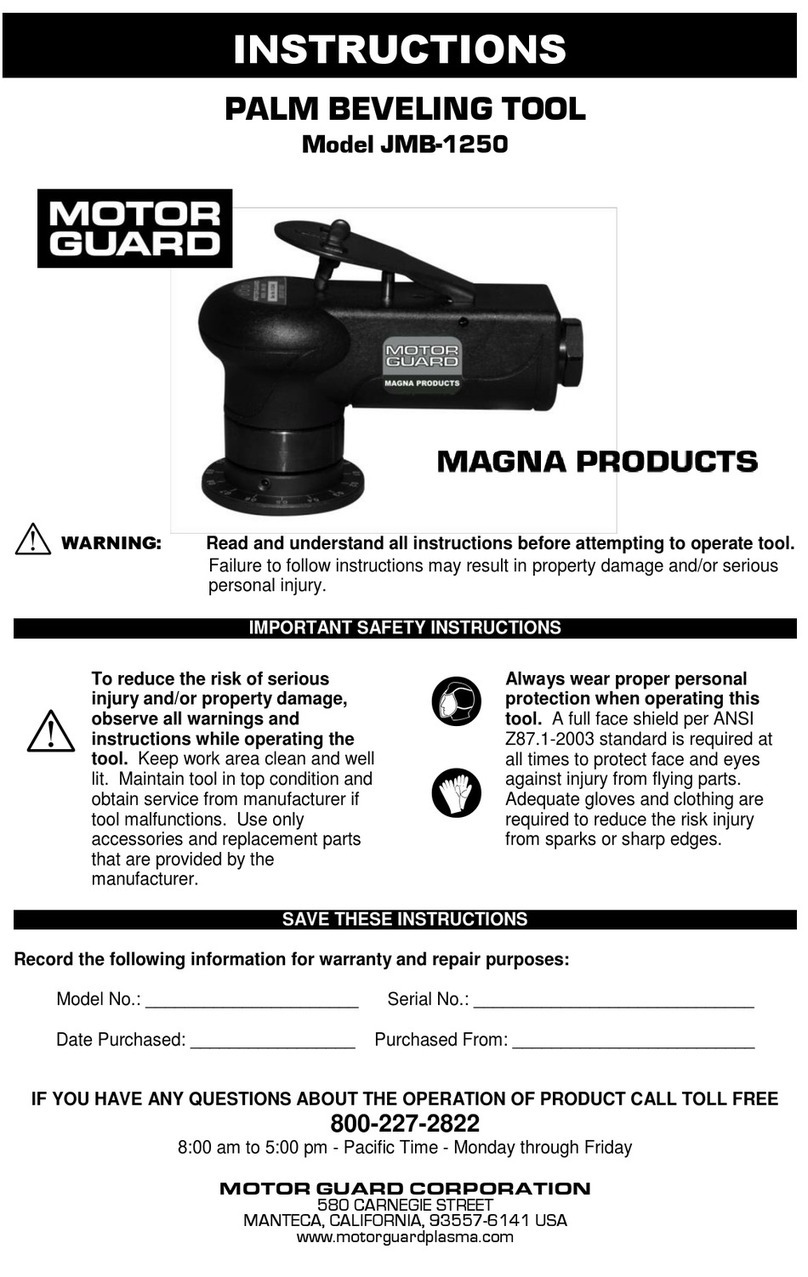
SPECIFIC SAFETY WARNINGS
2
DANGER
• To avoid serious injury, keep hands and ngers away from the
spinning router bit. Be aware of the bit at alltimes.
WARNING
AVOID THIS SITUATION!
• NEVER FEED YOUR WORKPIECE BETWEEN THE BIT AND
THE FENCE. Because of the direction of the bit’s rotation,
the bit could “grab" the workpiece and propel it away from
the table at a high velocity, potentially resulting in property
damage and serious injury to anyone in itspath.
• When the bit grabs the workpiece, your hands could be
drawn into the bit, resulting in serious injury
CAUTION
• Read, understand, and follow your router manufacturer’s
safety warnings andinstructions.
• Turn off and unplug your router before installing or
adjusting the bit or adjusting the bench top router table
and accessories. Never adjust the fence, plate, reducing
rings, or any part of the router or router table while the router
is running.
• Place the router table on a flat surface to prevent tipping
or sliding. Never stand on the router table.
• Set the bit guard directly over the router bit, at least
1/2" above the top of the bit or the top of the workpiece
(whichever is highest), make sure the bit doesn’t cut into
the bitguard.
• When adjusting the position of the fence, make sure no
part of the aluminum fence will contact the routerbit.
• Do not attempt to rout warped, twisted, or bowed
workpieces. All workpieces must have at faces and
square edges.
• Do not attempt to rout very large workpieces on a router
table. Very large workpieces can be difcult to control and
can cause the router table to tipover.
• Only use router bits in your router. Never use tools such as
carving burrs, mounted abrasives, wire wheels, or drill bits,
even if the shanks match the diameter of the router collet.
• Wear gloves when handling router bits.
Cutting edges aresharp.
• Never use dirty, dull, or damaged router bits. Remove
wood-resin build-up with a cleaner specically formulated for
cutting tools. Have dull bits sharpened by a qualied person.
Discard damaged bits.
• Make sure at least 75% of the router-bit shank length is
securely held in the router collet. To ensure a secure hold,
leave 1⁄16" to 1⁄8" (2mm-3mm) between the end of the bit
shanks and the bottom of the collet.
• Use the insert-plate reducing ring with the smallest
opening that allows the bit to pass through it. A large gap
around the bit can allow the workpiece to tip into the bit and
kickback.
• Position the fence faces as close as possible to the bit.
Turn the bit by hand to check for interference. Firmly tighten
the fence face knobs before routing.
• Adjust router speed to match the diameter of the bit.
Reduce router speed when using large-diameter bits.
See Recommended Router Bit Speeds for recommended
routerspeeds.
• Make sure the router motor is securely clamped in the
base before starting therouter.
• Always support the workpiece with the fence or start pin.
Only use the starter pin with router bits that have a guide
bearing. Failure to use these guides diminishes your ability
to control the workpiece and greatly increases the chance of
damage to the workpiece and/or serious personalinjury.
• When using the fence, always position the bit guard over
the router bit and as close to the workpiece surface
aspossible.
• Never remove a large quantity of stock in one cut. Make
several progressively deeper cuts, adjusting the router bit or
fence position betweencuts.
• Keep hands away from the rotating bit and your body out
of the path of the cut. Always use the bit guard, Use push
sticks, push blocks, and feather boards whenever possible,
especially when routing narrow workpieces. Turn off the router
before clearing parts ofscrap.
• Avoid awkward hand positions, where a sudden slip could
cause contact with the rotating bit. Neveroverreach.
• Avoid routing small parts. Rout the prole on a large
workpiece and then cut the part to nal size from the large
workpiece. If you must rout a small part, build an appropriate
jig or hold the part with a wood handscrewclamp.
• Make sure the workpiece is clear of the bit and the bit
comes to a complete stop before adjusting the workpiece
position. Never start the router with the workpiece in contact
with thebit.
• Avoid kickbacks. Kickbacks occur when the workpiece
binds or lifts off the table while being routed, causing it to
be thrown back toward the operator. To avoid kickbacks
and potential injury, use sharp bits, keep the machine
aligned and maintained properly, and adequately support
the workpiece. Do not attempt to rout workpieces that are
twisted, warped, or bowed, or that have looseknots.
2
SAFETY RULES
